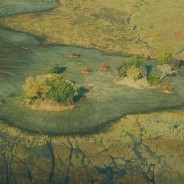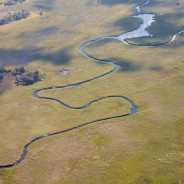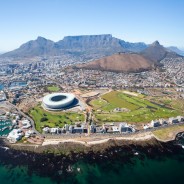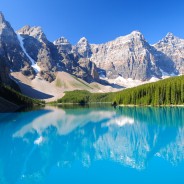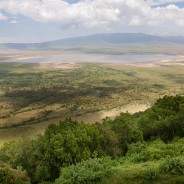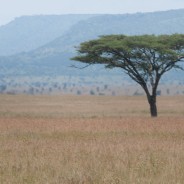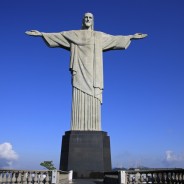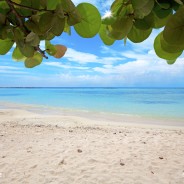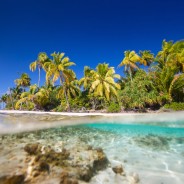Blog
When to go to Okavango Delta
Okavango Delta is a large inland delta located in Botswana, Africa. The Delta is recognized as one of the 7 Natural Wonders of Africa. The delta experiences approximately 11 cubic kiliometers of water spread across the area. The water is trapped in the delta and exits through evaporation or transpiration. The summer rains from Angola during the months of January and February fill the Okavango River as it makes its way into the delta. The waters are filling the Delta during the months of March, April, May, and June. The floods typically peak towards the end of June going into July and August. When to go to Okavango Delta The best time to go to the delta for wildlife viewing is during the months of July and August. The abundant water levels attracts the wildlife and creates one of the greatest concentration of animals throughout all of Africa. Okavango Delta is home to 6 of Africa’s Big 7 which include the lion, leopard, elephant, crocodile, hippopotamus, and the rhinoceros. In addition to these sought after animal sightings, visitors can also look for giraffe, cheetah, hyena, antelope, kudu, and ostrich is some of the potential highlights. Although July and August are the best months, June and September are both rewarding months and may possibly see lower rates. Birdwatchers can experience birdlife throughout the year but the rainy summer season during the months of November through April provide suspect bachelor environment for spotting an array and abundance of birds. This time of year has higher temperatures but is a great time for catching the life of the...
read moreWhen to go to Botswana
Botswana is one of Africa’s landlocked countries being surrounded by South Africa, Namibia, and Zimbabwe. It touches Zambia and Angola but this is only for a brief moment. Botswana is a flat country with close to 70% of it being covered by the Kalahari Desert. Unfortunately Botswana is one of the poorest countries in Africa as well as being one of the least populated. There are just over 2 million people throughout the country. The majority of people traveling to Botswana are expecting an encounter with nature either through the desert or through one of the delta areas. Two of most popular areas are the Okavango Delta and Chobe National Park. When to go to Botswana The dry season, which falls between the months of May through October, is the best time to visit Botswana for viewing wildlife. Because engaging nature is the primary reason that most people go to Botswana, this is the best time to go. When to go to Botswana: Weather In general, the dry season temperatures are around 68°F (25°C) during the day. The nights can get a little chilly and usually require wearing a jacket. As September closes the temperatures really began to rise. Temperatures during the daytime and October can top over 100°F (40°C). The majority of rain falls between the months of December through March. However, Botswana does not experience the rainy season that some other countries do. It is possible that the rains may not even come in all. Most of the water that floods the deltas come from upstream. When to go to Botswana: Wildlife Viewing The dry season is the best time for wildlife viewing because the animals gather near watering holes and any existing plant life. It is common to find animals in herds and group together. Okavango Delta is considered one of the largest in land deltas around the world. It has the distinction of being recognized as one of the 7 natural wonders of Africa. The best time for experiencing wildlife in the Okavango Delta is during the months of July and August. The waters have filled the Delta and large numbers of animals gather to enjoy the water and blooming plants. It is easy to see large herds of elephant, buffalo and other antelope as they come to drink. This also means the predators are present. When to go to Botswana: Rates The shoulder season which occurs from December to March offers lower rates to attract visitors. Although this is the rainy season, there is less rain than in other areas. The rain brings growth with the vegetation, and it also brings out the newborn zebra, warthogs, and the baby impalas. Even though it’s possibly raining, it is quite possible that the Okavango Delta has dried up. This means there will be no water-based safaris and everything will take place on land. Another great time to go for wildlife photography is in April following the rains. This brings out new vegetation, the days are comfortable, and allow life is...
read moreWhen to go to South Africa
When To Go to South Africa? South Africa is a country located at the furtherest most southern part of Africa. South Africa features Kruger National Park, Table Mountain, shark diving, and great beaches. These are just a few of the highlights for reasons to travel to South Africa. When to go is dependent upon what you want to do, but there are preferred seasons to visit this spectacular country. The climate and environment vary across South Africa. Although there are similarities with the temperatures and conditions, when to go can easily be affected by where you want to go. When To Go to South Africa: Weather and Seasons Seasonally speaking, the summer months run from December through March, autumn as April and May, winter June through August, and spring is September and November. Outdoor activities that are better in the warmth will be enjoyed the most during the summer months of December through March. Locals tend to experience vacation between mid December and mid-January, which can add to the busyness of the beaches and outdoor activities. If you are traveling from the north, you will more than likely appreciate the months of February and March. These months provide the warm sunny days for enjoying the outdoors and with a little less crowds. This is particularly the case for the coastal destinations. The summer days, away from the breezes of the shores, can be rather hot and muggy. Don’t be surprised if breezes turn into stronger gusts of wind. The spring months of October and November deliver flowering vibrations across the coasts and other regions. Although not usually recognized as a reason to visit this southern country, the blossoms can enhance a stay. When To Go to South Africa: Viewing Wildlife You can experience wildlife in one of the national parks of South Africa throughout any time of the year. However the best months to go for viewing bigger game run from the months of May through August. The months of June and July are probably considered the best and these also bring high season rates. When To Go to South Africa: Holidays It is always good to avoid travel during the holiday times from the local area. These breaks increase the crowds on the beaches and in other attractions. One of the primary periods to avoid is Easter weekend. Along with Easter weekend, South African students receive a 10 day school vacation. This makes it easy for families to take vacations and holiday travels around the area. December through mid-January features a variety of holidays across the country. A second school break occurs from late September through the first week of October. When To Go to South Africa: More Info When To Go always recommends looking at other resources for more information. You can visit the South Africa Tourism Board for additional insights on your travels to South...
read moreWhen to go to Moraine Lake
When To Go to Moraine Lake? Moraine Lake is located in Banff National Park near the town of Lake Louise, Alberta. The lake is a glacially-fed lake with no other source nor exit. Moraine Lake will reach its peak in the latter part of June. The lake site among a series of mountain peaks creating one of the most picturesque scenes. Moraine Lake and the surrounding area are affectionately referred to as the “Twenty Dollar View.” The reason for this term of endearment comes from the fact that this scene was on the back of the Canadian twenty-dollar bill between the years of 1969 through 1979. When to go to Moraine Lake: Time of Year The best time to go to Moraine Lake is from mid-June through the end of July. The melting glaciers and rising levels of the lake tend to crest around the middle of June. The full lake creates a distinct shade of blue as refraction from the rock floor colors the water. The lake sits at an elevation of around 6,183 feet (1,885 m). The elevation combined with how far north the national park affects the window for experiencing this amazing scene within nature. The summer months of June, July, and August are the best times to visit Moraine Lake. The temperatures are warmer in the lake levels have crested. This makes the most enjoyable experience of Moraine Lake. The warmer weather provides visitors with a greater climate for experiencing the lake. You can hike one of the various trails around the lake or rent one of the canoes and get out on the water. When to go to Moraine Lake: Time of Day The best time of day to go to Moraine Lake depends on what you want to accomplish. The earlier part of the day is usually less crowded, whereas the latter part of the day is usually warmer and more comfortable for experiencing the area. If you are a photographer and want to capture one of the most famous images, then the best time of the day to come is early in the morning. The first reason is that turning this time of day it is less likely that someone is on the lake with the canoe. However, the most important reason is that the sun rises from behind the view of Moraine Lake in the mountain peaks surrounding her. This morning light creates a reflection on the mountain peaks on the perfectly still like waters. The best time of day to come to Moraine Lake for canoeing is going to be in the late morning throughout the afternoon when the temperatures are warmer. If you want to go hiking around the various trails you may want to plan to spend the day there. There are a few 3 to 4-hour hikes and one that is an 8 hour round...
read moreWhen to go to Ngorongoro Crater
When To Go to Ngorongoro Crater? Ngorongoro Crater is part of the Ngorongoro Conservation Area. Authorities argue that as a conservation area, the restrictions and protections are stronger than a national park. Ngorongoro Crater is one of the 7 natural wonders of the world. The crater is in good company because Tanzania is home to three of the wonders of nature from Africa. Ngorongoro Crater provides an opportunity for visitors to experience 5 of Africa’s Big 7, which include the lion, leopard, elephant, hippopotamus, and rhinoceros. Although the leopard is doubtful because it is usually atop the rim in the forest, you have a fair chance of seeing the other animals. The crater provides one of the most intimate encounters with wildlife and nature. When to go to the Serengeti: Weather Tanzania, and Ngorongoro Crater, are near the equator which keeps temperatures fairly consistent throughout the year. However, during the months of June through August, temperatures can get chilly atop the rim of the crater can get a bit chilly. A light jacket will often take care of the evening. The more important question is related to the rains. Ngorongoro Crater experiences rainy and dry seasons versus big changes in temperatures. October and November are the months that feature the short rains. The heavier and longer rains show up between the months of April and May. Both seasons of rain create challenges for vehicles, but the heavy rains deter travelers creating a true low season. The short rains end at the close of November and for sure by December. The light rains create green and new life within the crater making January and February a pleasant time to visit. The Ngorongoro Crater season extends from June through November with the leading dry season occurring between August and September. When to go to the Serengeti: Wildlife Viewing You can see animals in Ngorongoro Crater all year long. There is less of a problem of finding wildlife that might occur in the Serengeti or other open range areas. However there are times of the year where there are more wildlife on the floor of the crater. The months of January and February are great months to visit the crater because the floor is full of wildlife. Even more noticeable is the abundance of babies following their mothers around. Ngorongoro Crater provides travelers with the most intimate encounters with wildlife and the babies running around during these two months only make it better. Although not known for the migration, Ngorongoro Crater will witness an increase in the number of wildebeests when the herds are in this part of the Serengeti. Wildlife can enter and exit the crater, but there is always animals to experience once you are inside the rim of the crater and down on the...
read moreWhen to go to the Serengeti
When To Go to the Serengeti? The Serengeti is a national park located in the northwest part of Tanzania, Africa. The name Serengeti come from Swahili language meaning “endless plains.” This national park is home to the Serengeti migration which is one of the 7 natural wonders of Africa. The Serengeti is home to 6 of Africa’s Big 7, which include the lion, leopard, elephant, hippopotamus, rhinoceros and crocodile. The abundance and variety of wildlife make the Serengeti a nature lover’s first destination. When to go to the Serengeti: Weather Tanzania, and the Serengeti, are near the equator which keeps temperatures fairly consistent throughout the year. However, during the months of June through August, temperatures can get chilly atop neighboring wonders that include Mount Kilimanjaro and Ngorongoro Crater. The bigger question has to do with the rains. The Serengeti basically has rainy and dry seasons. The short rains occur during October and November. The long or heavy rains occur during the months of April and May. Either rains can make it difficult to get around, but the heavy rains deter visitors and leads some lodges and campgrounds to close during these two months. January and February, following the short rains, proved to be comfortable months to visit. The Safari season extends from June through November, however the primary dry season runs from August through September. When to go to the Serengeti: Wildlife Viewing Wildlife is available to view in the Serengeti throughout the year. The rains create challenges making the dryer season the better viewing option. The animals tend to be hovering around riverbeds and ponds during the dry season. This creates a more concentrated wildlife viewing opportunity. The Serengeti showcases two spectacular wildlife experiences. The first occurs during late January through February. This is known as the calving season for the wildebeests. It is an amazing occurrence with almost every calf being born within a 2 to 3 week window. You’ll see that new life is also present for zebra, impala, gazelle, and warthogs. Witnessing all these babies fosters an intimate encounter with nature. The Serengeti’s second showcase features the migration. The Serengeti migration, which includes over 1 million wildebeests and thousands of zebra, gazelle, and impalas, is one of the 7 natural wonders of Africa. What most people don’t realize is that the migration is an all-year endeavor; the herd is always moving. The majority of the migration occurs within the Serengeti National Park. However one of the highlights is watching the migration herd crossing the Mara River into Kenya and the Masai Mara. During this crossing the wildebeest are fighting the waters and more importantly the crocodile. Ballooning over the Serengeti to experience the migration from above is possible in February and March but a more productive time to experience the herd would occur in the summer months of June July and...
read moreWhen to go to Christ the Redeemer
When to go to Christ the Redeemer? Christ the Redeemer is a famous statue that site atop Corcovado which is a granite monolith overlooking the Rio de Janeiro. From Christ the Redeemer visitors can look out over the harbor of Rio de Janeiro, which is one of the 7 Natural Wonders of the World. They can also capture images of the famous Sugar Loaf Mountain. This mountain reaches a peak of 1,296 feet (395 m). When to go to Christ the Redeemer: Best Time of Year The ideal time to explore Christ the Redeemer is during the months of September and October. Visitors will find that the temperatures and humidity are both lower and easier to handle. These cooler temperatures will make exploring Corcovado and the Christ the Redeemer statue easier. When to go to Christ the Redeemer: Best Time of Day The ideal time to explore Christ the Redeemer is later in the afternoon. The sun rises towards the statue which makes a morning visit more challenging because you are looking off into the sun. The later in the afternoon the better as far as sightseeing and visibility. This is also the best time of day to visit Christ the Redeemer because of photography. The sun will be behind you and off to the side providing light over the harbor and city. This makes pictures of Sugar Loaf, the harbor, and the city of Rio better. However, all that being said, a morning visit is usually cooler and less crowded. The statue observation areas tend to get more crowded as the day wears on. A morning visit is also the best time to take a picture of the statue. Whereas you are looking at the sun as you peer out over the city and harbor, looking back will provide a view of the statue lit by the sunlight. Now you have a question of which pictures are more important to you, or you can plan a morning trip and an afternoon trip to get the best images in both cases. When to go to Christ the Redeemer: More Info It is always helpful to review more than one source for information when you are planning a major trip. Most people want to make sure the know the ins and outs of what to do and when to do it. Having the best experience is part of our objective. You can visit the Brazilian Tourism Board for more on Rio, the harbor, Corcovado and Christ the Redeemer. Visit the Brazil Tourism Board website directly for additional...
read moreWhen to go to Aruba
When To Go to Aruba? Aruba is a Caribbean island located in the southern part of the Caribbean near the coast of Venezuela in South America. Aruba is affectionately referred to as, “One Happy Island.” One of the features comes form the islands desert characteristics that feature a variety of cacti. However the main attraction to Aruba is the beaches, relaxed atmosphere and cool breezes that complement the warm temperatures. When to go to Aruba: Weather The weather in Aruba is generally pleasant all year long. Although it is a warm and sunny island, there is typically a cool breeze that creates a comfortable environment. Occasionally, this breeze can be a stronger wind the may blow your hat away. Another key benefit of the weather Aruba is the absence of any real hurricane or tropical storm season. Although storms are possible, the likelihood of interfering with a vacation is slim. Most storms and hurricanes staying north of Aruba. The months between mid-April through December represent the season where winds can easily be higher. When to go to Aruba: Travel Season The best time to go to Aruba is from mid December through mid April. Although the temperatures are similar throughout the year, there tends to be a more gentle tropical breeze during these months. This is considered the high season for Aruba. During these months visitors bask in the sun while being refreshed from the ocean waters and cool tropical breezes. Some might say it is the epitome of relaxation. When to go to Aruba: Activities and Events Outdoor activities are available and enjoyable all year long. Swimming, hiking, jeep tours, and just basking in the sun are all readily available. There are two key events that attract visitors to Aruba. The first is the six week Carnival that occurs during the months of January and February. This is an engaging festival with costumed parades, torch-lit parades, and the Grand Parade. A great time to be in Aruba, but expect higher rates. Another popular festivity full of singing and dancing is the Soul Beach Music Festival. This annual event occurs over the Memorial day weekend. Another fun event, accompanied by higher room...
read moreWhen to Go to Disney World
When to Go to Disney World? If you are a kid, any chance you get. Disney World is a magical place that delivers a great time whenever you go. However let’s be candid, there are better times to go for a more enjoyable experience. The high season for Disney World includes the months of June and July and August. These months represent the season where most Americans take their family vacations. With Disney World being the number one tourist attraction in the United States, this means crowds pretty much everywhere you go. This is also when the temperatures are at their hottest. Disney seeks to address this with indoor or shaded lines, fans, and the use of the Fast Past. The summer months represent the longest lines limiting the number of rides and attractions you will experience. If you have the freedom to avoid the summer months, then you should opt to visit Disney World during another part of the year. Best time to go to Disney World After visiting Disney World around 10 times over the years, it is easy to highlight the best time to go. Disney is known for creating magical experiences. However, there is no season more magical at Disney than the Christmas season. Christmas decorations, holiday lights, and a seasonal transformation of the Disney World parks creates one of the most incredible holiday celebrations. Disney transforms the parks into their holiday wonderland at the beginning of November. Disney’s Osborne Family Spectacle of Dancing Lights is truly a magical experience leaving both children and adults mesmerized. There are people who return to Disney just to experience these amazing dancing Christmas lights. Although you will have a similar experience November through mid December, the best time to go is during the first three weeks of November. The crowds are minimal, rates are lower, and you have a greater chance of better weather. When to go to and When Not to go to Disney World: Crowds The best time to go to Disney to avoid the crowds is during the month of November and first couple weeks of December, April through most of May, and the months of January and February. Each of these periods have the least number of visitors with shorter lines. This gives you and your family the best chance of experiencing more rides. (See below for reasons to not go in Jan and Feb). The worst times to go to Disney World because of crowds is during the months of June, July, and August. Additionally, you should avoid the month of March because of spring breaks in the last two weeks of December because of the Christmas holidays. These are the busiest times at Disney World. When to go to and When Not to go to Disney World: Weather When it comes to weather, the good news is that Orlando, Florida has fair weather year round. The most comfortable weather occurs during the months of April, May, and October. Although November is usually comfortable during the day it can easily be too cool at night or for visiting the water parks. However, the cool evening temperatures of November add to the magical Christmas and holiday celebrations. The summer months can be out right hot. This can make standing in lines uncomfortable,...
read moreWhen to go to Tahiti
Tahiti is one of those destinations that everyone should get to experience at least once in a lifetime. A destination that can easily be described as a taste of paradise. Pictures from Tahiti are often what highlight the list or recommendations for the best beaches, most romantic paradises or the greatest secluded vacation spots from around the world. Tahiti is the largest island from French Polynesia. It is located in the Pacific ocean in the archipelago of the Society Islands. The island reaches a peak of 7,352 feet (2,241 m) making it the highest point in all of French Polynesia. When To Go To Tahiti The best time to go to Tahiti is any chance you get. In all seriousness, the best time to visit Tahiti is going to occur between the months of May through October. If you are getting ready to embark on a vacation to Tahiti, get ready for a taste of heaven. When to go to Tahiti: Weather The temperatures in Tahiti are fairly consistent ranging from 70°F to 88°F (21°C to 31°C). The high season temperatures average around 77°F (26°C ), and range between 70°F to 82°F. The more important weather consideration is the rainy season. January experiences the most rain, with the rainy season including the months of November through April. Both December and January will experience approximately 12 inches of rain through the month creating the peaks of the rainy season. August is usually the driest month, with June through September each representing one of the drier months. May and October are added to the ends of this period to round off what would be considered the overall dry season. The first of May running through the end of October is considered the high season, which is also the best time to go to Tahiti. During these months the temperatures are milder and the rains have subsided making for a tremendously relaxing environment. Cool breezes, fair temperatures and exquisite scenery may have you looking for ways to just call Tahiti a permanent residence. When to go to Tahiti: Events and Activities The largest annual Tahitian festival, known as Heiva Nue Festival, happens during the month of July. The festival features dancing, singing and lots of food. For some this is a reason to go, whereas for others it is a reason to avoid the island. Beaches, swimming, snorkel, diving, kayaking, caving canoeing or just lounging around are all mostly enjoyed during the dry season. It is hard to find a day that is not beautiful. When to go to Tahiti: More Info Tahiti is a destination that represents an encounter with paradise. Make sure you explore your options for making your trip the best it can be. When To Go always recommends visiting other sources for more information. You can learn more about Tahiti from the Tahiti Tourism...
read more
